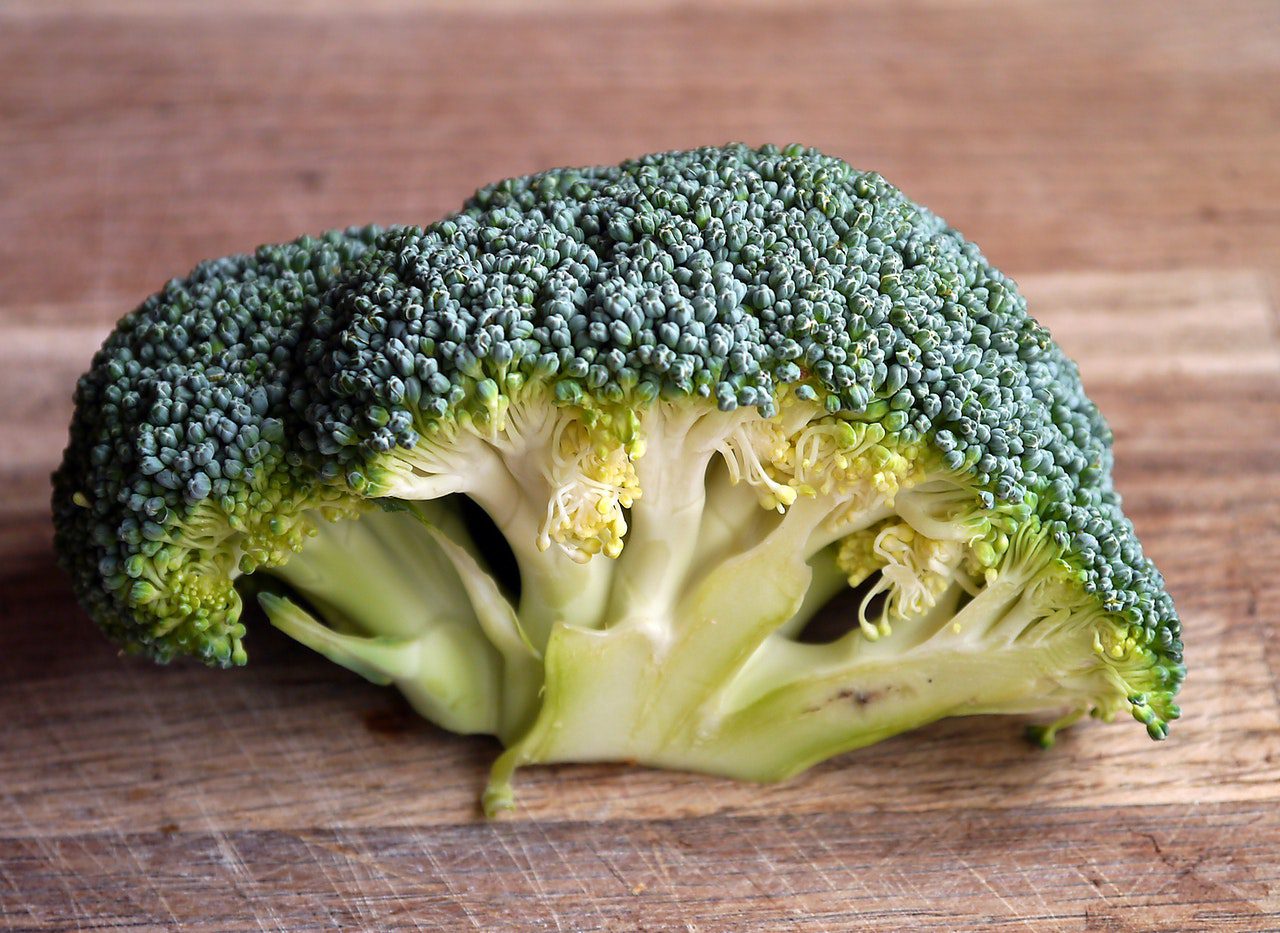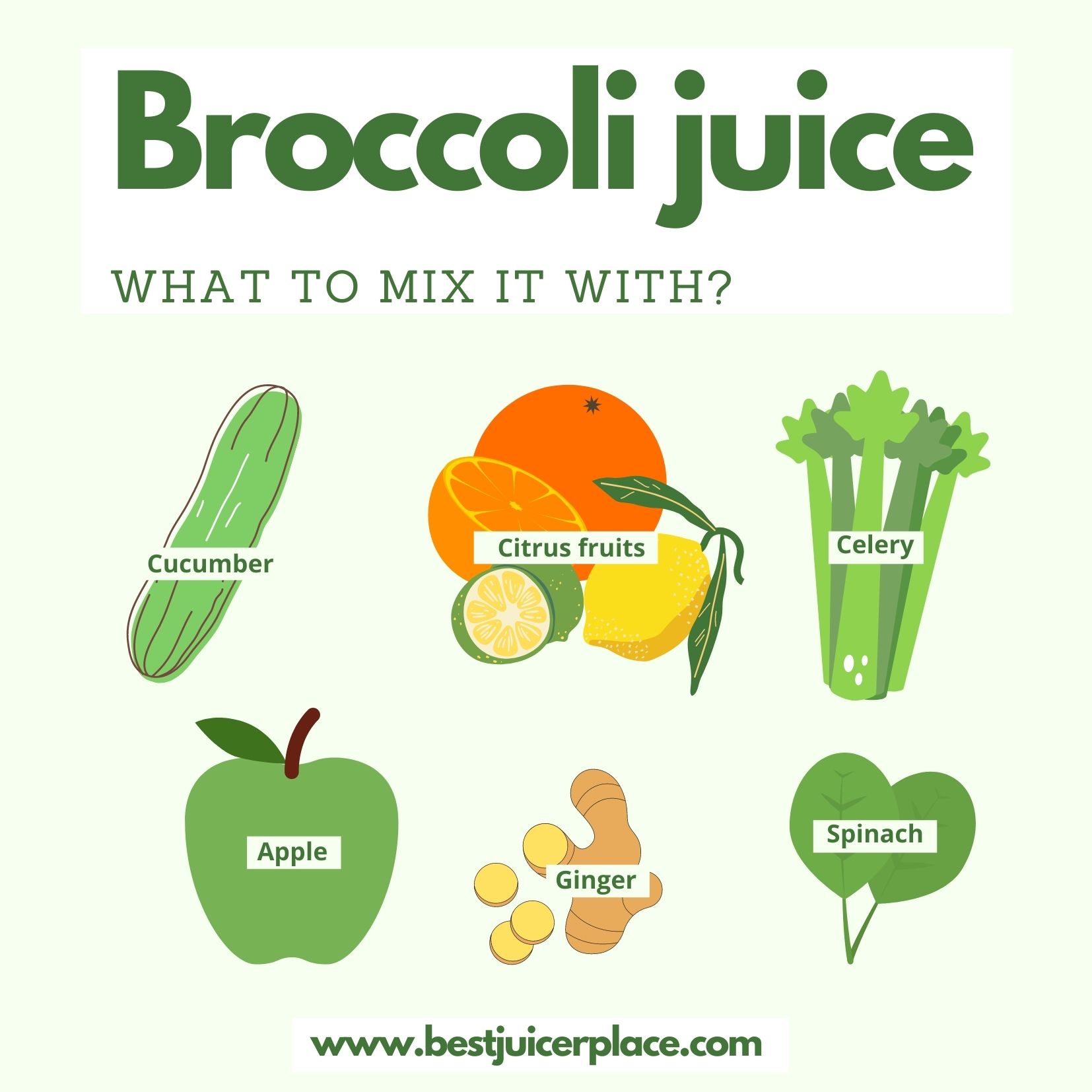Many of us have rather not positive associations when it comes to consuming cooked broccoli. These unpleasant childhood memories for me personally are similar to those with brussels sprouts for lunch in kindergarten… We should think it over and change our attitude to broccoli right away and appreciate this super healthy vegetable. Using it raw, by making a broccoli juice can be a great option instead of cooking it.
Find out more about broccoli juice in our article below.
1. Can you juice broccoli?
Broccoli is, without any doubt a vegetable suitable for juicing. When consumed raw, in the form of juice, it preserves all its minerals and vitamins. In fact, the thermal treatment of broccoli lowers its nutrient value. It is recommended to steam it up to 5 min instead of cooking, not longer. The most beneficial way of consuming broccoli is eating it raw or in a juice form.
If you wonder which parts of broccoli can be juiced, and the question – “can you juice broccoli stalks” bothers you, here comes the answer:
It is recommended to juice the whole broccoli – the stalks and the leaves. The stalks contain as much value as the other parts of the plant. Broccoli leaves have a bit of sweet flavour and high content of water. That is why they are more suitable for juice than other leafy greens, like kale, which is relatively dry.
But, how to juice broccoli? Don’t worry, it is as easy, as with any other vegetable. Before juicing broccoli, wash it carefully, cut into smaller pieces to fit easily in the masticating juicer. Put it into a juicer with the assistance of the pusher, which makes it safer. Voilà! Your juice is ready. Juicing with a masticating juicer is the best and the most efficient way to get broccoli juice. When using a slow juicer, you will keep the valuable nutrients of the vegetable.
2. Choosing the best broccoli for juice

When you pick the broccoli for the juice, you should pay attention to a few vital details. The first thing is the proper colour of the vegetable. The fresh broccoli should be intensive green.
Another important aspect, when it comes to choosing the appropriate broccoli, are the flowers. These small “roses” on the top of the vegetable should be closed, tight and very close to one another. When the vegetable stays long on the stores’ shelf, it starts to lose its nutrient value. The flowers are beginning to open, and the broccoli changes its colour to yellow. It also loses its flavor and becomes not tasty any more.
So putting it another way, the broccoli you are about to buy should look just beautiful, like a fresh, flower bouquet you want to give your mom for a birthday or any other occasion.
3. Broccoli juice benefits
Broccoli juice is an excellent source of vitamin C and vitamin K, A, B complex, D and beta-carotene. The last one – a beta carotene presence, maybe surprising because the vegetable is green itself. The beta-carotene is here in a hidden form (because of a decent amount of the disguising it chlorophyll). What is interesting is that broccoli has even more beta-carotene, then carrot or pumpkin. The level of calcium in broccoli is also very high.
Including broccoli juice into your diet can be very beneficial to your health, due to its anti-cancer properties, preventing especially from throat, stomach and gut cancer. Broccoli juice also reduces the cholesterol level and helps to fight heart diseases and allergies. Thanks to lutein, broccoli juice has a positive impact on sight, it regenerates the eyespot apparatus, called stigma.
Broccoli juice is also known for its beneficial skin effects. Due to sulforaphane, it helps keep the proper level of collagen and prevents skin cancer and sunburns. Carotenoids, especially mentioned before beta-carotene, fight free radicals and stop damages caused by UVA(1) radiation.
Read more about the vegetable juices for skin in our article: Is juicing good for the skin? Revealing the glowing skin secrets!
4. How much of broccoli juice can I drink per day?
The proper amount of broccoli juice per day should not exceed one glass. Broccoli, like other cruciferous vegetables (for example cabbage, brussels sprout, kale and cauliflower), when consumed in an excessive quantity, are difficult for the body to digest. It can also cause gas and bloating.
5. Broccoli juice recipes

The flavour of broccoli juice is relatively strong, so it can be not easy to drink it without any additions. Mixing broccoli with celery or cucumber is a perfect idea. Citrus fruits, like lime or lemon, can also be a valuable and tasty additive to your juice flavour.
Check out our favourite juice recipes, including our super healthy vegetable-broccoli. From each one recipe, you get around one full glass of freshly squeezed juice. It is recommended to drink the juice right after preparing, to keep the nutrient value of squeezed vegetables and fruits. Enjoy our selections of recipes.
Ginger Immune Defence
1/2 inch of ginger
1 lime (without skin)
1 small broccoli (~9 oz)
1 cucumber
3 celery stalks
1 green apple
3-4 mint leaves (to put on top)
Good Morning Mr Broccoli!
1 small broccoli (~9oz)
1 lime (without skin)
2 oranger (without skin)
Green Force to the rescue
1 small broccoli (~9oz)
2 bunches of fresh spinach
2 apples
5 clementines
1 cucumber
We hope that we managed to convince you to try the broccoli juice. If you are not a fan of this vegetable but are aware of its tremendous nutrient prosperities and benefits it may give to your body, juicing it seems to be a good idea. Broccoli taste surrounded by the other branch of flavour in the juice can be much easier to handle. If you are a great admirer of broccoli, enjoy the recipes we propose above.
Try also to juice other super-healthy vegetables, like sweet potato, cabbage and beet greens. Read more about them in our articles:
Are sweet potatoes good for juicing?
Main reasons why you NEED to start drinking cabbage juice!
Liked the article? Share it!

Recent Comments